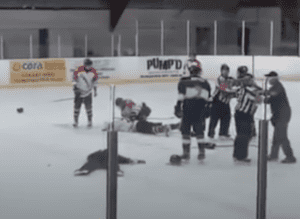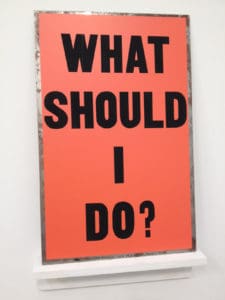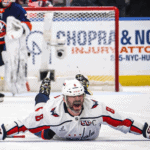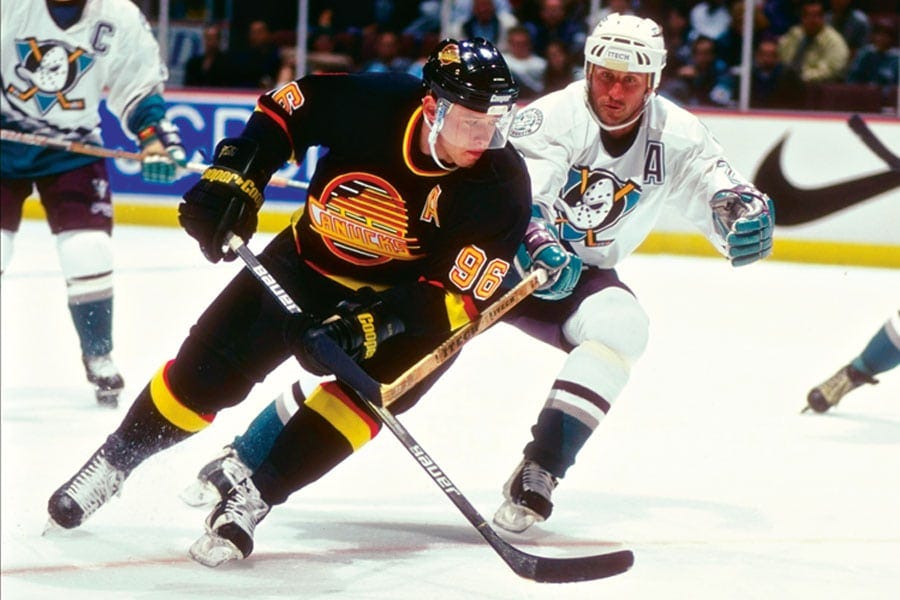
In our previous article, we looked at how Pavel Bure’s ability to generate speed and offense using linear (and lateral) crossovers can easily still be used in today’s game. In fact, players such as Nathan Mackinnon and Connor McDavid are making a living (and living hell for defensemen) right now in the NHL doing so.
So how can we work on this skill? As said before you really need to focus on the following:
- Ability to manipulate all of your edges, primarily your outside edge.
- Proper Weight Shift
- Crossing over with full extension (your underfoot)
- Balance
- Agility
So as a coach, the first thing I would do is put the players on the boards with their stick up and in a good “hockey” position (button-down, knees bent and even with the toe of their skate, shoulders parallel, head up to prevent hunching over).
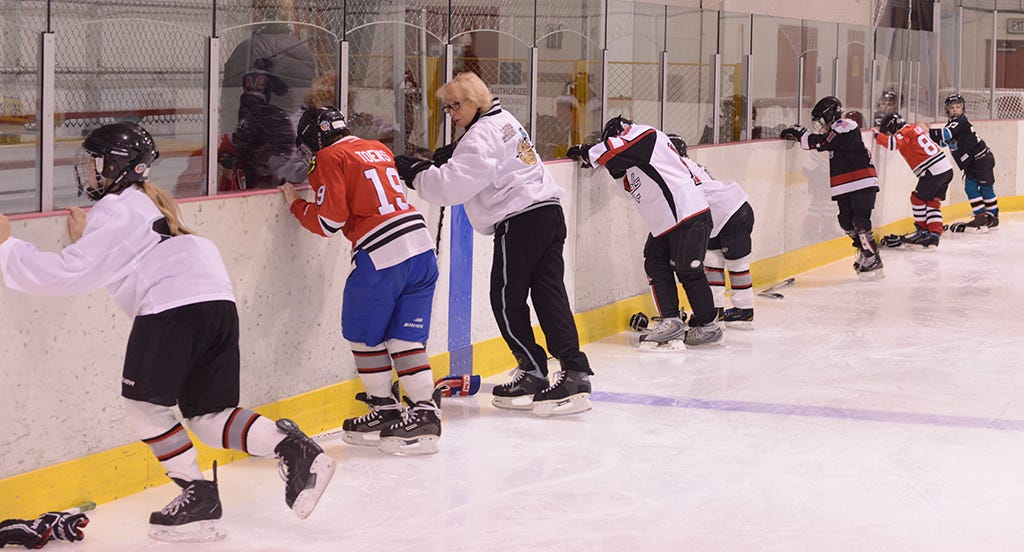
From here they walk literally along the boards, stepping over their gliding foot in a similar motion as crossing over. The key is to make sure that the foot that is being “crossed” or “stepped’“ over is locking in on that outer edge (the kid in the Toews jersey shows what that should look like above). Once the crossover leg is planted, the player should push off on their outside edge and return back to their stance. Do this going both to the right and left with however many steps you want.
The next step in this progression is to add some resistance.
In this drill, you need two skaters (or a coach and a skater). The skater working on their cross-overs will be taking lateral steps across the ice. In the image below they will place their stick with their palm up, out so their partner can grab a hold and provide resistance. Add or lessen the resistance as necessary but make sure the player walks across in both directions, always facing the same way to make sure they work on both edges.
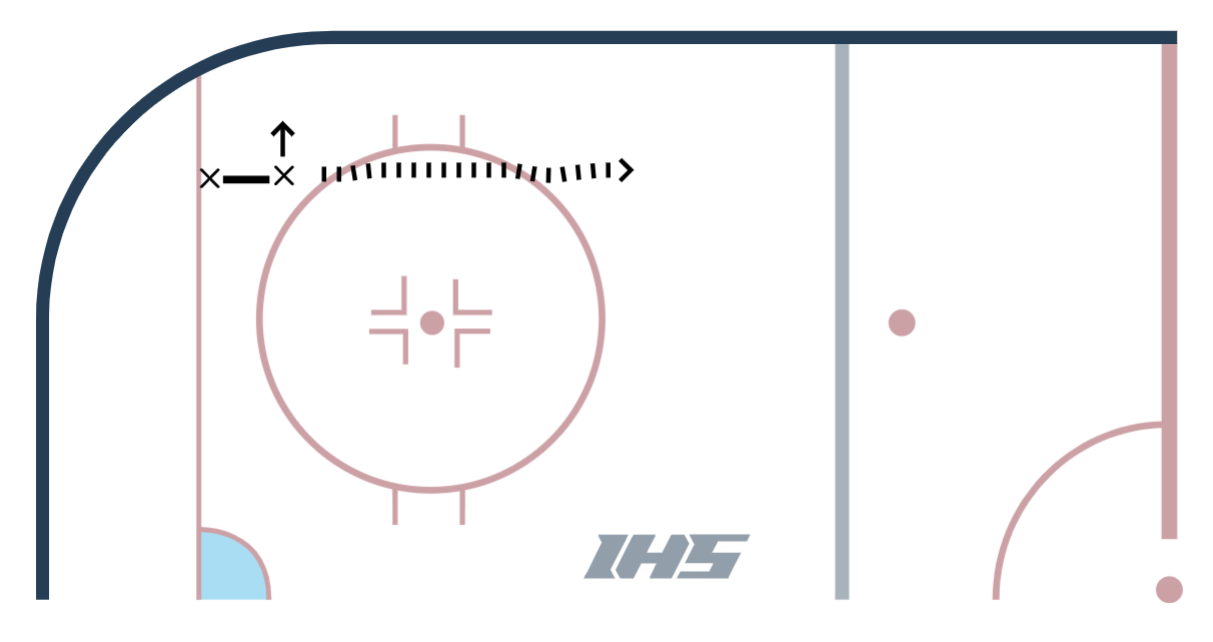
The key is to again stay low, step over their gliding foot which has gone from a “neutral edge” (or glide where the players are not leaning on either edge) to transferring their weight onto that gliding foot and leaning into the outside edge to generate power on the cross over/under.
Next, you can have the players skate around circles and work on their cross-overs to further work on the isolation and proper balance, weight transfer, and return.
After you’ve performed the isolation, it’s time to start training for game application.
I start with no pucks and have the player work on doing 2-3 quick linear cross-overs in both directions up and down the rink.
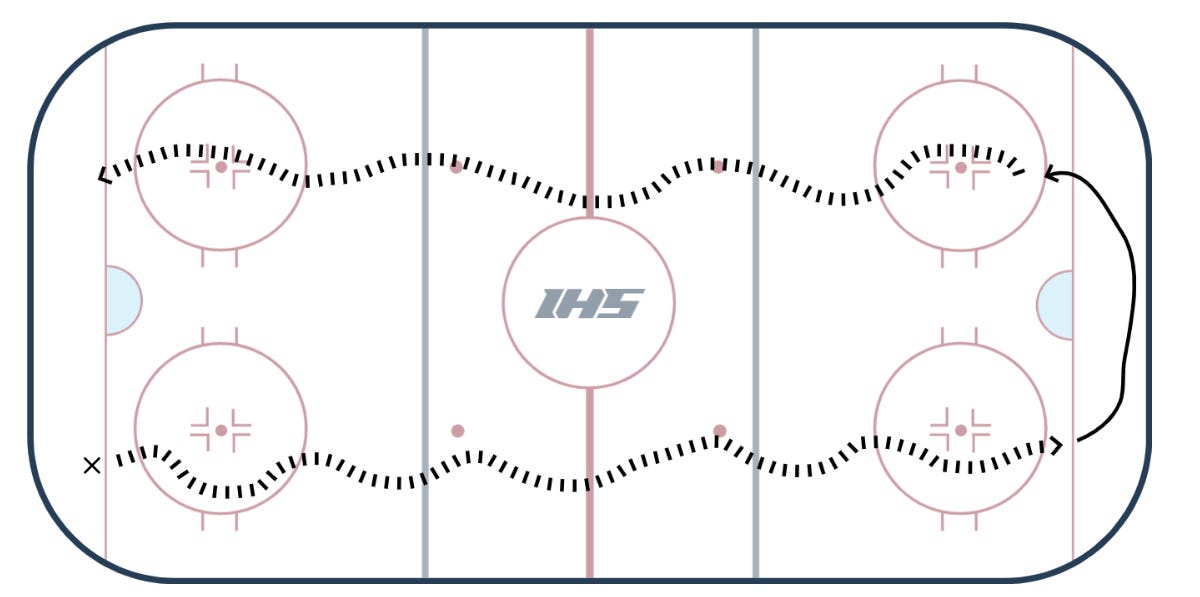
If you are running a large group you can set it up for 4 different stations to take off from and get continuous practice while also resting:
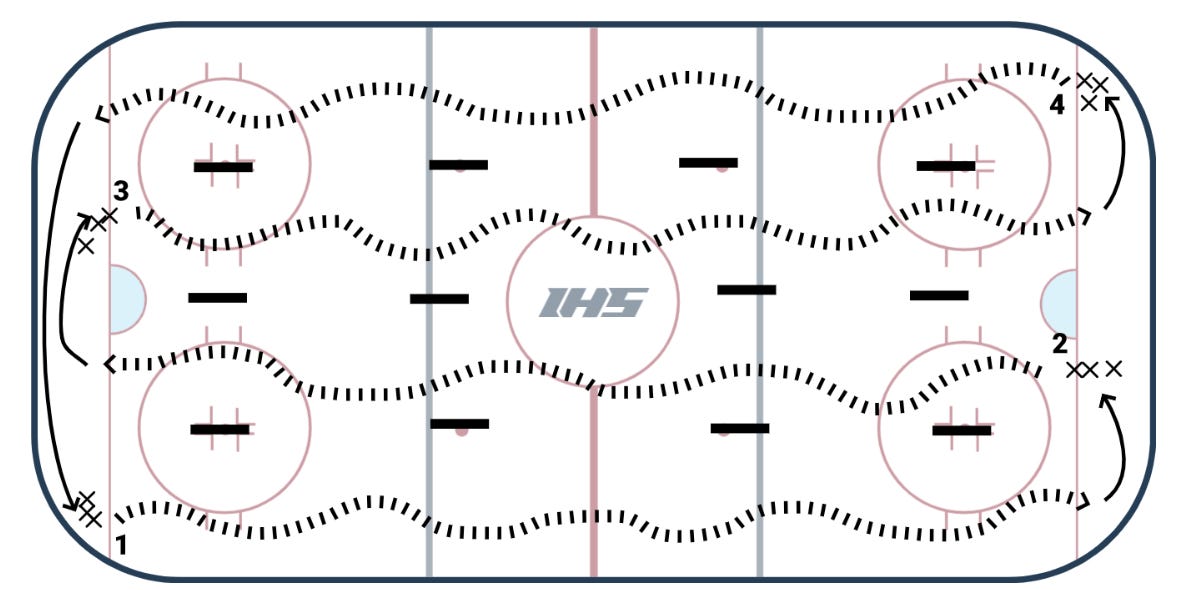
The next step is to add pucks and making sure that the skaters are keeping the puck in a proper carrying position. The idea is that we want the players to still be able to make either a move/shot/deke/pass/curl/escape out of from the cross-over as quickly as possible.
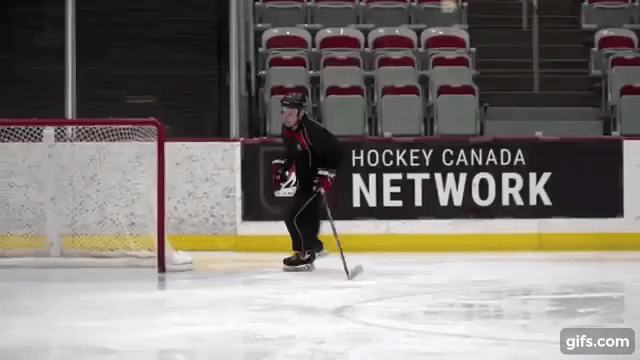
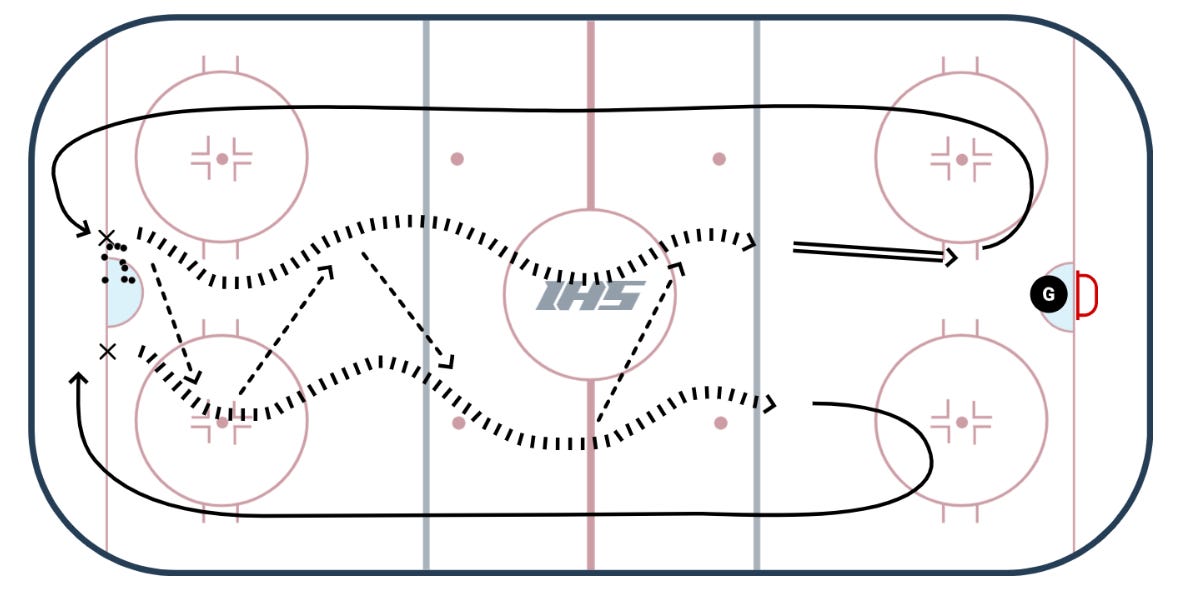
The last drill I use is to teach the players how to pass and receive within the cross-over.
The above drill is a warm-up drill I used for the players and get our goaltenders quickly warmed up. This might go for a brief 5 minutes, but as the player without the puck starts to receive the pass, they will start taking their linear acceleration strides away from the puck as they absorb and put themselves into a new position along the ice. This is a great move to make when attacked down the ice as it forces the defense to move but also creates more space and options for the puck carrier.
From here is where you start to delve into the writings of people like Darryl Belfry, to understand how this skill can be used to manipulate defenders and create options on the attack. You can also watch highlight videos of players like Pavel Bure, Nathan Mackinnon, and Connor McDavid to try and replicate the ways they use the linear acceleration crossover to attack and create options.
You can create your own drills that simulate situations where you would need or can use the linear crossover to attack defenders or get shots on goals. It’s an excellent skill to use when trying to create quality offensive zone entries.
Please let me know if you liked this series or what should be added or taken away. Thanks to icehockeysystems.com for their free drill drawing software that you should definitely take advantage of!





